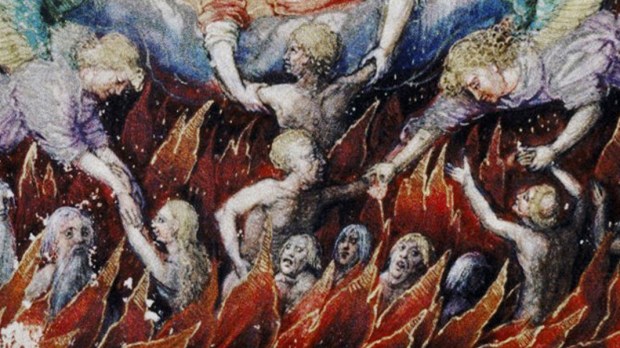The Catholic Church firmly upholds the existence of purgatory, a preparatory stage of the afterlife that leads a soul into Heaven.
Little is known about what happens when a soul reaches purgatory, but many saints and theologians have described it as a “purifying fire.” Even the Catechism of the Catholic Church refers to purgatory with this type of image.
The Church formulated her doctrine of faith on Purgatory especially at the Councils of Florence and Trent. The tradition of the Church, by reference to certain texts of Scripture, speaks of a cleansing fire: “As for certain lesser faults, we must believe that, before the Final Judgment, there is a purifying fire. He who is truth says that whoever utters blasphemy against the Holy Spirit will be pardoned neither in this age nor in the age to come. From this sentence we understand that certain offenses can be forgiven in this age, but certain others in the age to come.”
CCC 1031
However, the image of a fire can make it seem like there are souls burning in fire, similar to souls in Hell burning for eternity.
Origen, a theologian of the early Church, provides a clarified view of this fire and what exactly it “burns.”
If a man departs this life with lighter faults, he is condemned to fire which burns away the lighter materials…’ Would you enter into heaven with your wood and hay and stubble and thus defile the kingdom of God…this fire consumes not the creature, but what the creature has himself built, wood and hay and stubble. It is manifest that the fire destroys the wood of our transgressions and then returns to us the reward of our great works.”
This image can help us understand that God isn’t sending us to a punishment of fire to torture us before entering Heaven, but instead we pass through a purifying fire, that burns away any smaller sins that we are holding onto when we die.
Above all, the fire of purgatory is not meant to part of a gruesome torture, but a way to prepare our hearts to more fully embrace the joys of Heaven.



